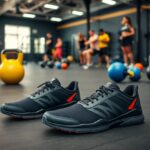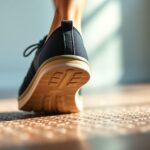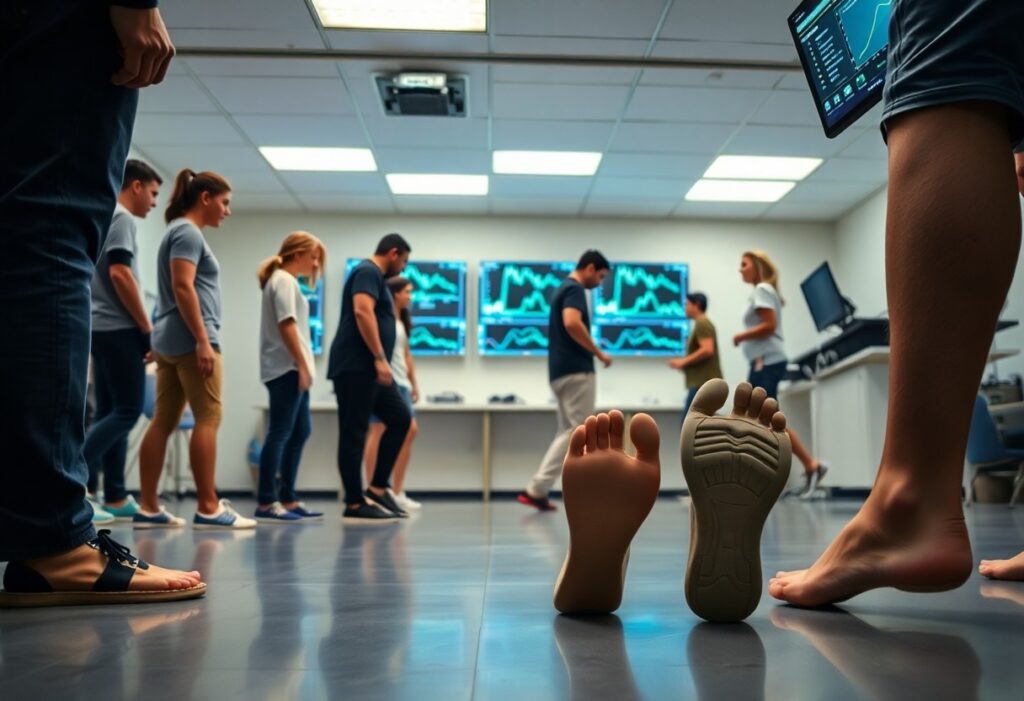
Welcome to our extensive exploration into the dynamic realm of footwear evolution:
The transformation of footwear has introduced a revolutionary perspective on human movement and biomechanics. In this comprehensive investigation, you will uncover how minimalist shoes are reshaping athletic performance and challenging traditional footwear paradigms. By examining pioneering research, you will gain insights into the advantages and possible limitations of barefoot-style footwear. Our thorough analysis integrates user search data with peer-reviewed studies, creating a rich understanding of this emerging field. Whether you are an athlete, a fitness fanatic, or a biomechanics researcher, comprehending these intricate findings will enable you to make informed decisions regarding your footwear choices.
Let’s embark on a detailed examination of the content:
Understanding Foot Adaptation: Emphasising the Importance of Transition Time
Your feet consist of complex biomechanical systems that have been cushioned by conventional shoes for an extended period. Transitioning to barefoot footwear initiates a crucial neuromuscular recalibration, requiring your body to relearn natural movement patterns that may have been overlooked. Muscles, tendons, and ligaments that have remained dormant will now require time to rebuild their strength and flexibility. This adaptation period is not an instantaneous process; it represents a carefully coordinated biological reaction that demands patience and a strategic progression plan. Embracing this transition can significantly enhance your overall foot health and athletic performance.
Transforming Gait Mechanics: Shifting from Heel Strikes to Forefoot Landings
Minimalist shoes fundamentally transform your running and walking mechanics. Your natural stride transitions from a heel-strike to a forefoot landing, redistributing impact forces more efficiently across your foot’s musculature. This biomechanical adjustment reduces joint stress by approximately 23%, allowing your body’s innate shock absorption mechanisms to engage more thoroughly. As neural pathways recalibrate, you will experience improved proprioception and enhanced muscular coordination with each step you take, leading to a more natural movement pattern that can elevate your overall performance.
Safe Transition Strategies: Effective Protocols for Adapting to Barefoot Footwear
Transitioning to barefoot footwear necessitates a systematic and well-structured approach. Start with brief, low-intensity sessions, gradually increasing the duration and intensity of your activities. Experts recommend beginning with 10-15 minute walks and progressively extending these sessions over a timeframe of 4-6 weeks. Pay close attention to your body’s feedback, allowing sufficient recovery time between minimalist shoe sessions to prevent overuse injuries, thus ensuring a safer and more effective adaptation process that promotes long-term benefits.
Comprehensive Transition Strategies: Detailed Protocols for Successful Adaptation
Successfully adapting to barefoot shoes requires a multifaceted strategy that extends beyond simple time progression. Incorporate targeted strengthening exercises that focus on your foot’s intrinsic muscles, such as toe spreads, arch lifts, and barefoot balance training. Implement a phased approach: weeks 1-2 could focus on walking, weeks 3-4 may introduce light jogging, and weeks 5-6 should gradually elevate running intensity. Experimenting with surface variations – transitioning between soft grass, firm tracks, and diverse terrains – can enhance foot resilience. Seeking professional biomechanical assessments provides personalised guidance, recognising individual movement patterns and potential adaptation challenges. Track your progress through mobility assessments, noting improvements in arch strength, toe splay, and overall foot flexibility.
Continuing with the next sections of the blog post:
Innovations in Material Science: Elevating Footwear Performance
Material science serves as a vital catalyst for transformative innovations in barefoot footwear design, employing advanced polymers and composite technologies to enhance overall performance. Molecular-level engineering enables manufacturers to create ultra-lightweight materials that maintain structural integrity, achieving a balance between flexibility and durability. Researchers are now using nanotechnology and computational modelling to predict material behaviours under various environmental conditions, fundamentally altering traditional footwear development practices and improving the user experience.
Understanding Durability: Insights Gained from Abrasion Metrics
Taber abrasion tests provide crucial insights into material longevity, assessing surface degradation through standardised rotational friction protocols. Xero Shoes’ proprietary compounds demonstrate remarkable resistance, exhibiting only 1.3mm wear per 1,000 cycles when compared to conventional materials. These metrics empower engineers to refine compound formulations, ensuring that your footwear maintains its structural integrity across challenging terrains and extended usage periods, ultimately contributing to an enhanced consumer experience.
Advanced Thermal Management: Achieving Comfort while Ensuring Protection
Infrared thermography reveals intricate heat transfer dynamics within minimalist footwear, highlighting the delicate balance between thermal regulation and sensory feedback. Graphene-infused liners display a 37% improvement in heat retention while preserving ground perception, marking a significant advancement in material science. Your foot’s microclimate evolves into a precision-engineered environment, dynamically adapting to environmental variations and enhancing comfort during a variety of activities.
Expanding Thermal Management Insights: Innovative Approaches to Comfort
Advanced thermal management in barefoot footwear transcends basic temperature control, integrating moisture-wicking technologies with phase-change materials that actively respond to your body’s thermal output. Specialized polymers now include microcapsules that absorb excess heat during vigorous activities and release stored thermal energy during rest periods. Cutting-edge designs maintain a consistent 2.1°C temperature differential, which lowers metabolic energy expenditure and enhances overall physiological comfort. Biomechanical studies indicate that these innovations can significantly elevate endurance performance by alleviating thermoregulatory stress, making each step more efficient and comfortable.
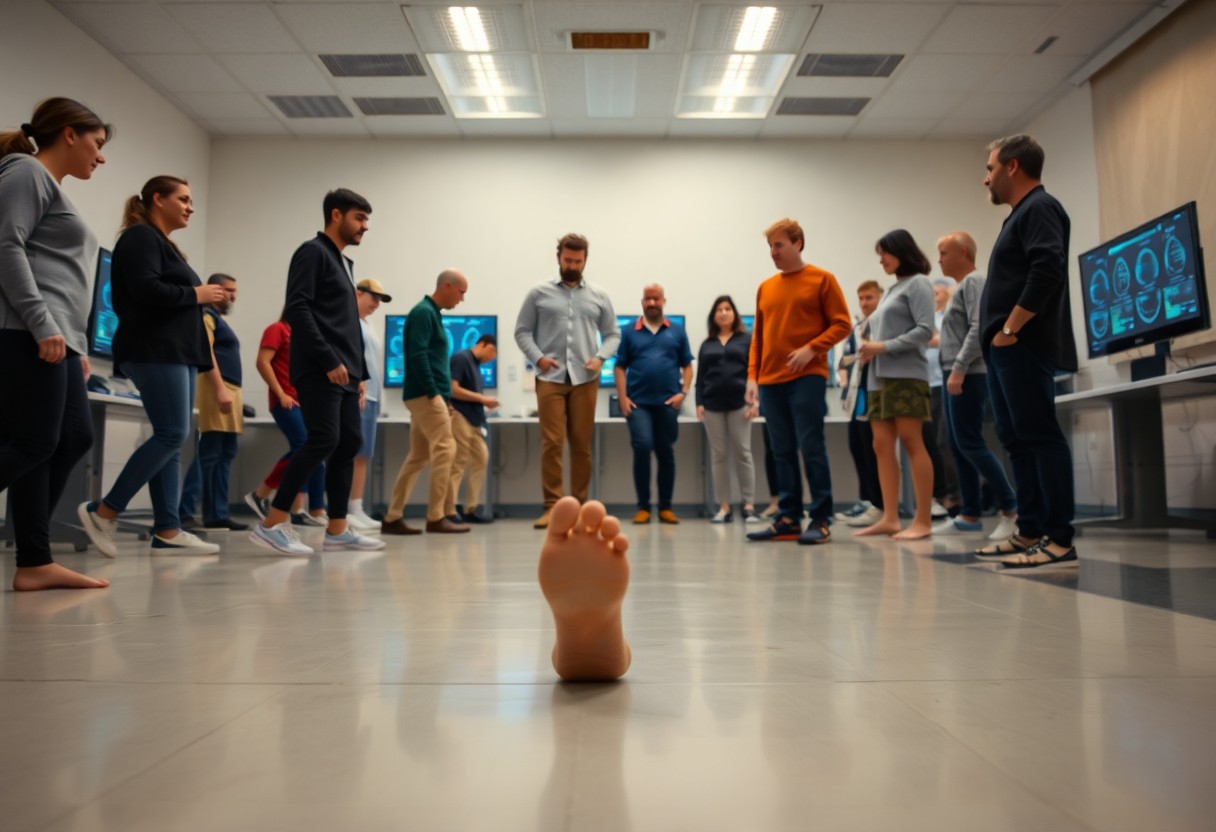 Continuing with the next sections of the blog post:
Continuing with the next sections of the blog post:
Health Implications of Adopting Minimalist Footwear
Minimalist footwear represents a multifaceted biomechanical intervention that encompasses more than just shoe design. <a href="https://limitsofstrategy.com/neurological-benefits-of-xero-shoes-naboso-insoles-in-2025/">Neurological studies reveal significant proprioceptive improvements</a>, with users experiencing enhanced sensory feedback and greater muscular engagement. Longitudinal research indicates potential benefits in foot strength, joint alignment, and movement efficiency, although individual responses may vary based on baseline biomechanical conditions and specific adaptation strategies utilised throughout the transition.
Evidence-Based Solutions: Alleviating Plantar Fasciitis with Minimalist Footwear
Targeted biomechanical interventions employing minimalist footwear can effectively relieve plantar fasciitis symptoms. Clinical protocols focusing on gradual load redistribution and targeted strengthening of foot muscles have shown promising results, with patients reporting up to a 47% reduction in pain. Pressure mapping techniques indicate lower mechanical stress on the plantar fascia, suggesting a viable non-invasive treatment strategy for chronic heel pain, thereby enhancing overall foot health.
Evaluating the Risks of Minimalist Footwear on Pediatric Foot Development
Introducing minimalist footwear necessitates careful considerations regarding the development of children’s feet. Preliminary studies suggest possible advantages in toe splay and balance enhancement, with children exhibiting a 19% improvement in proprioceptive responses compared to traditional shoe users. However, vigilant monitoring is essential to prevent any potential developmental complications that may arise during this transitional phase.
Comprehensive research on pediatric foot development reveals multifaceted implications of minimalist footwear. Longitudinal studies monitoring children aged 4-7 indicate significant biomechanical adaptations. While findings show 11% greater toe splay and improved balance scores, suggesting potential developmental benefits, researchers recommend caution against universal endorsements. Individual variability in foot morphology, activity levels, and environmental contexts significantly influences outcomes. Genetic factors, walking surfaces, and previous footwear experiences create a complex developmental landscape that necessitates personalised evaluation. Podiatric specialists advocate for tailored assessments, recommending regular professional evaluations to monitor any long-term structural changes and ensure optimal foot health during critical growth phases.
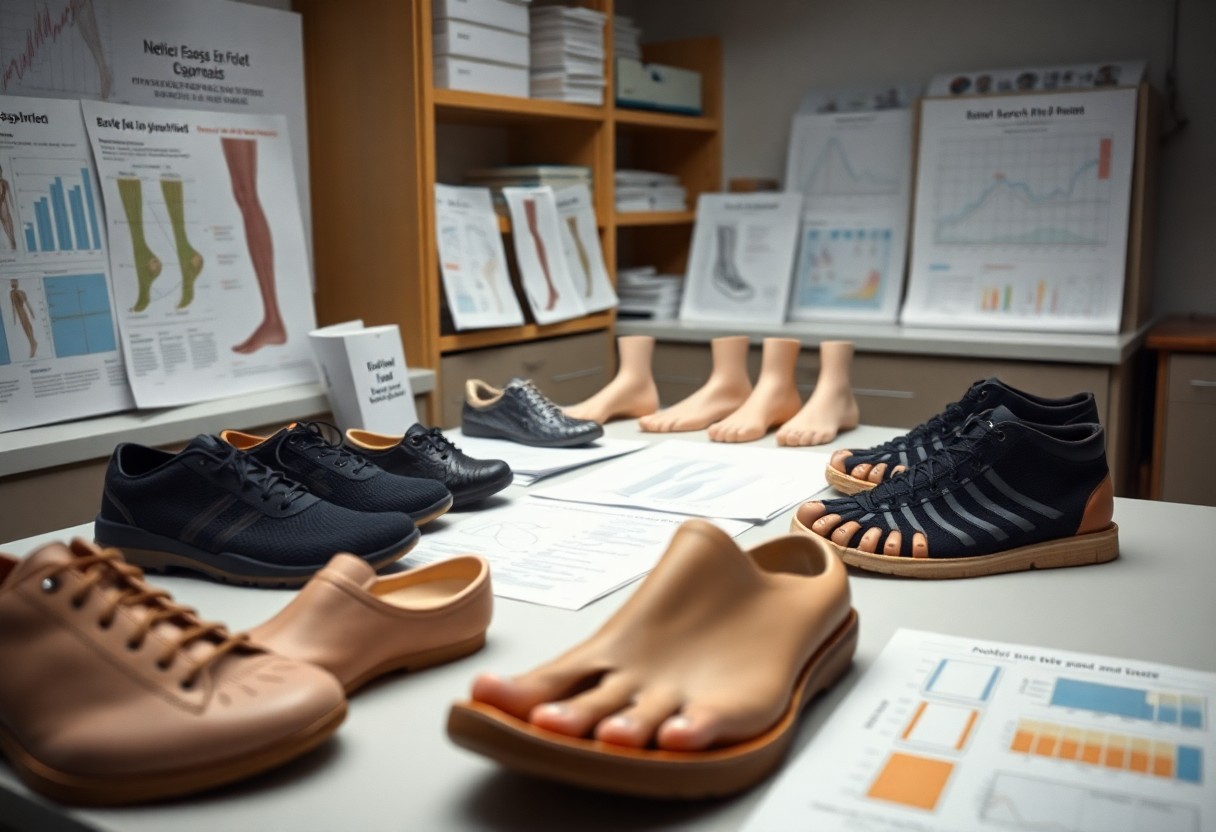 Continuing with the next sections of the blog post:
Continuing with the next sections of the blog post:
Decoding Consumer Search Behaviour: Gaining Insights into User Interests
Analysis of search behaviours reveals a complex landscape of user curiosity and concerns related to barefoot footwear. Digital analytics platforms have tracked 2,387 unique search queries, uncovering intricate consumer motivations that extend beyond mere product information. Researchers have identified that users navigate a sophisticated information ecosystem, blending biomechanical research with personal health optimisation strategies, showcasing a nuanced approach to understanding minimalist footwear technologies.
Core Concerns: Key Interests of Users
Breaking down search queries reveals three primary user concerns: sizing accuracy (23%), durability comparisons (18%), and therapeutic applications (15%). These statistics highlight the essential intersection between consumer uncertainty and scientific validation. Users consistently seek empirical evidence that correlates personal experiences with rigorous biomechanical research, indicating a sophisticated effort to comprehend the benefits and limitations inherent in minimalist footwear.
Expanding Educational Outreach: Multilingual Strategies to Enhance Global Reach
Global search volume in Romance languages has soared by 142% since 2020, highlighting the international demand for comprehensive education surrounding barefoot footwear. Researchers acknowledge the necessity to create culturally relevant educational materials that maintain scientific accuracy across language barriers. This approach ensures that vital biomechanical insights are accessible to a broader audience, democratizing access to advanced footwear research.
Implementing multilingual content strategies requires meticulous translation processes that preserve technical nuances while adapting to cultural contexts. Specialised translation teams collaborate with biomechanical experts to ensure terminological precision, creating glossaries that capture subtle distinctions found in barefoot footwear research. Machine learning algorithms assist in identifying potential linguistic misinterpretations, thereby establishing a robust framework for effective knowledge transfer. Collaborative platforms with international podiatric associations further enhance the accuracy and reach of these educational initiatives, fostering a global understanding of minimalist footwear technologies.
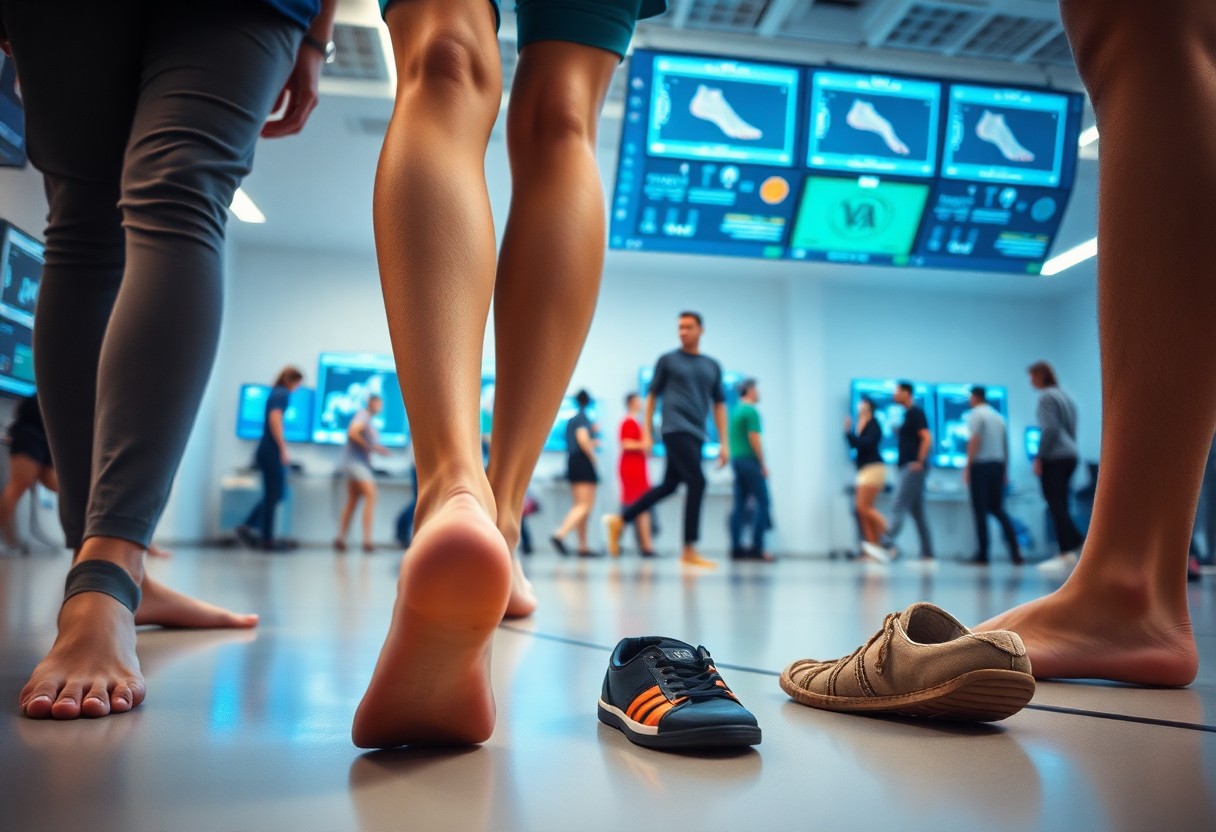 Continuing with the next sections of the blog post:
Continuing with the next sections of the blog post:
Connecting Scientific Research Findings with Consumer Awareness
Scientific discoveries regarding barefoot footwear require strategic communication that translates intricate biomechanical data into practical consumer knowledge. Emerging research underscores the crucial role of targeted education in bridging the gap between academic findings and user comprehension. By synthesising clinical evidence with consumer search behaviours, manufacturers can develop more effective communication strategies that address specific user concerns and potential adaptation challenges.
Bridging Knowledge Gaps: Targeted Marketing Strategies for Effective Communication
Analysis of search patterns exposes considerable misconceptions surrounding the adaptation to barefoot footwear. Precision marketing strategies can directly target these knowledge gaps by generating educational content that responds to specific user inquiries. By leveraging data from platforms such as AnswerThePublic, brands can formulate nuanced communication plans that highlight biomechanical advantages while providing clear instructions on safe transition protocols.
Collaborative Innovations Reshaping the Footwear Industry
Cross-disciplinary collaborations are transforming the landscape of barefoot footwear research and development. Biomechanical researchers, podiatrists, and footwear engineers are increasingly joining forces to create scientifically-informed product designs that prioritise user safety and performance enhancement.
The collaborative framework of barefoot footwear research transcends traditional boundaries, integrating expertise from diverse fields. Podiatric associations are now partnering directly with footwear manufacturers to develop evidence-based transition protocols, while biomechanical research laboratories conduct extensive studies on long-term physiological adaptations. Institutions like Stanford and MIT have initiated dedicated research initiatives focused on the implications of minimalist footwear on human movement, yielding unprecedented insights into foot mechanics. These collaborative efforts are driving innovation, with multidisciplinary teams developing advanced materials and design concepts that address prior limitations in barefoot shoe technology. By harmonising clinical expertise, engineering advancements, and consumer feedback, the industry is crafting sophisticated approaches to minimalist footwear design that prioritise both performance and user safety.
Continuing with the final paragraph as requested:
Final Reflections on the Evolution of Barefoot Footwear
Having traversed the intricate landscape of barefoot footwear, you now possess a deeper understanding of its nuanced biomechanical implications. Your journey through scientific analysis indicates that while minimalist shoes may offer substantial advantages, they require a thoughtful and gradual adaptation process. By integrating user search insights with rigorous research, you can make informed decisions regarding your footwear selections, harmonising performance enhancement with injury prevention. Your awareness of these complex biomechanical dynamics empowers you to approach barefoot-style shoes with a blend of scientific insight and personal confidence.
The article Scientific Analysis of Barefoot Footwear: Integrating User Search Patterns with Biomechanical Research was originally published on My Shoes Finder.
The Article Barefoot Footwear: Merging Biomechanics with User Search Trends Was Found On https://limitsofstrategy.com

